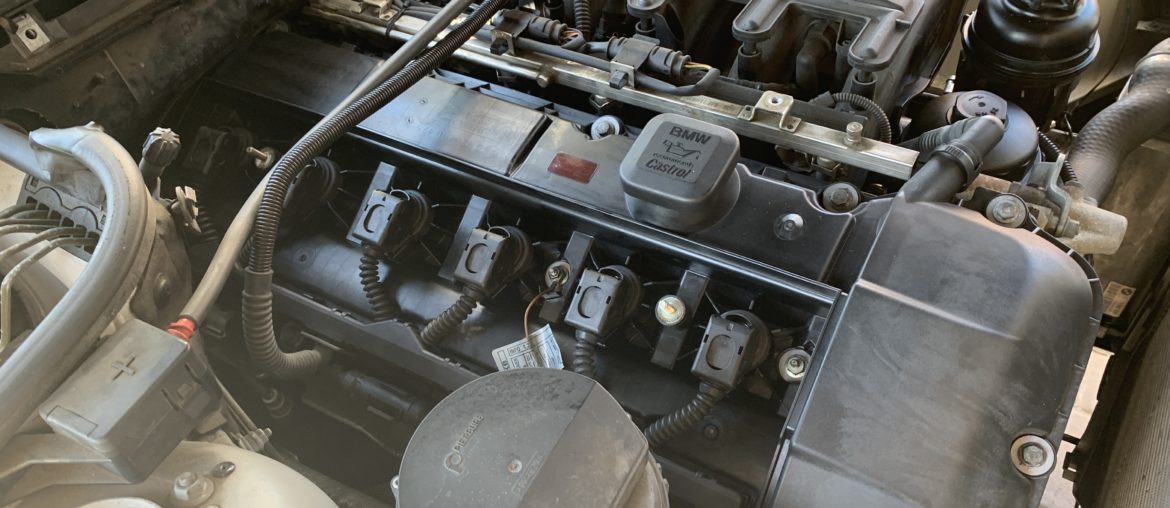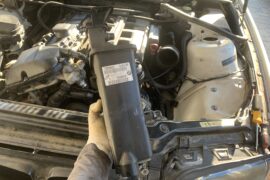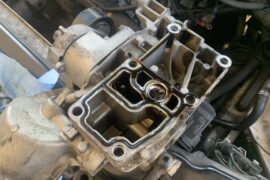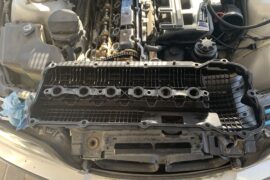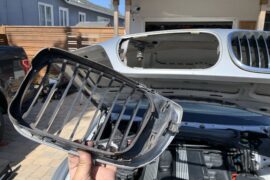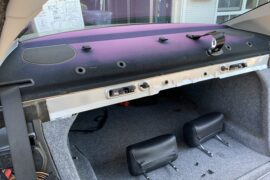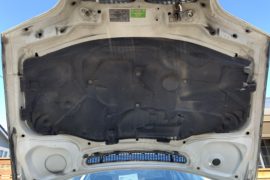If it is time to do the Inspection Service II service on your BMW E46, or you don’t know when the last time the spark plugs have been changed, it may be a good idea to replace them. BMW recommends changing the spark plugs on the E46 every 100k miles, although many would argue that this is too long of an interval. Because this interval is based only on mileage and not on age, you may need to consider how long it has been since the last spark plug replacement.
On a related note, you want to avoid having the spark plug seize inside of the cylinder head. Application of anti-seize on the spark plug threads helps, but replacing spark plugs more often than the 100k-mile maintenance interval can also minimize the chance of this occurring.
The BMW E46 utilizes a coil-over configuration, with each ignition coil matched to one spark plug. In total, that comes out to (6 qty) ignition coils and (6 qty) spark plugs on this inline six engine. I’ve written this DIY tutorial to replacing the spark plugs for the E46, which will cover all 323i, 325i, 328i, and 330i models.
Tools & Materials
Spark Plugs
All BMW E46’s (with exception of the M3) use the NGK BKR6 EQUP or the Bosch (4417) Platinum+4 FGR7 DQP. Either of these spark plugs are considered as OEM spark plugs for the E46. When you’re shopping for spark plugs, look at the quantity being sold and shop for the best unit price.
NGK BKR6 EQUP: 1pk / 4pk
Bosch (4417) Platinum+4 FGR7 DQP: 1pk / 6pk
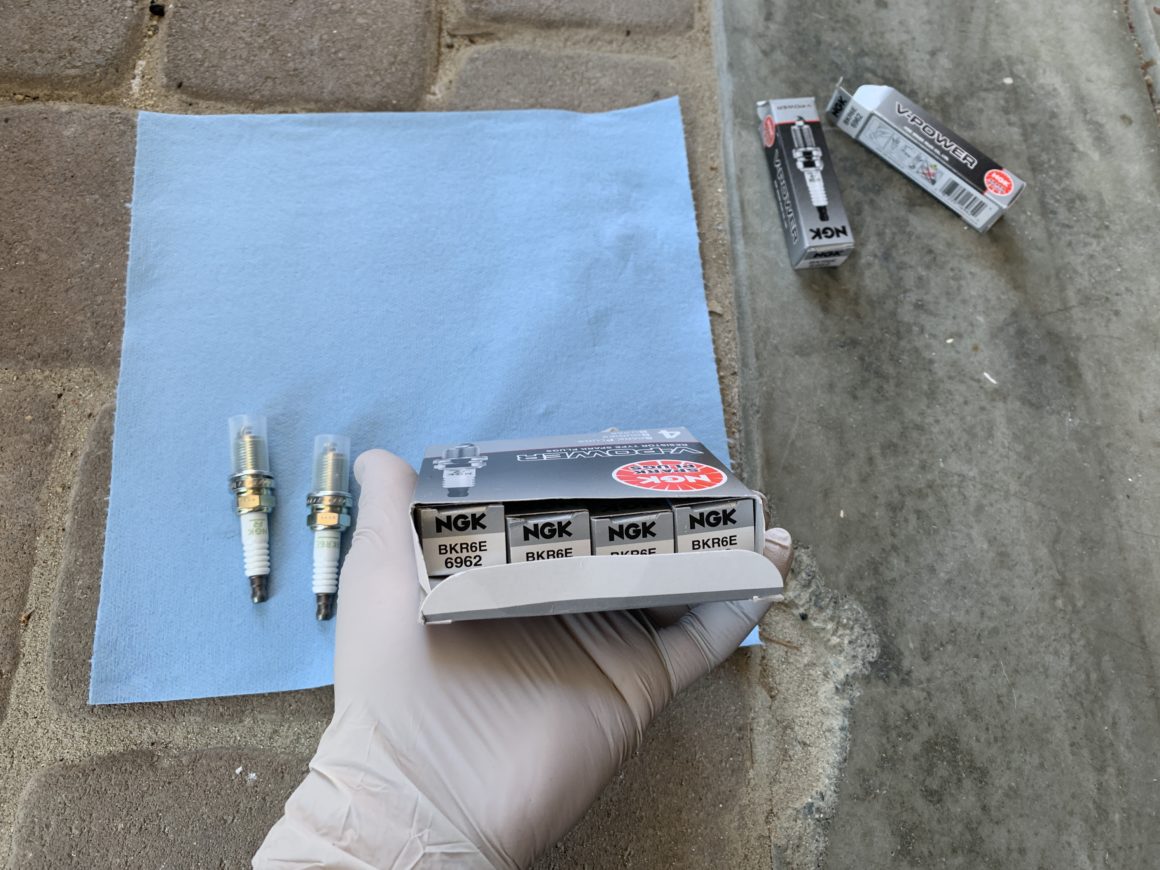
Spark Plug Gap Tool
When you purchase spark plugs, they should already be gapped. Sometimes, they can get knocked around in transit and the gap may be altered. More than likely the gap will be correct when you get it, but I have had instances where the gap was not correct out of the box.
For single-prong spark plugs like the NGK BKR6 plugs, you can check and adjust the gap with either a coin-style or wire loop type of spark plug tool. If you need help with gapping spark plugs, here’s a guide that I put together for reference. With the 4-prong Bosch FGR7 plugs, you can’t really adjust them so you would assume that they are gapped properly from from the factory.
Coin Style Gap Tool: Lisle 67870
Wire Loop Gap Tool: CTA Tools 3238
Anti-Seize Thread Lubricant
This will be used to apply in small amounts to the new spark plug threads in order to prevent seizing of the spark plugs to the cylinder head. This bit of preventative work makes things a lot easier when you need to replace the spark plugs in the future.
Permatex Anti-Seize Lubricant, 1 oz. Tube
Dielectric Grease
Dielectric grease is applied to the inner portion of the ignition coil boot to prevent voltage leaks and protect electrical connections from salt, dirt, and corrosion.
Permatex Dielectric Grease, 0.33 oz. Tube
Socket Set & 5/8″ Spark Plug Socket
Typically a mechanics tool set will include a 5/8″ spark plug socket. If you are looking for a mechanic’s tool set, check out this guide to choosing the right mechanic’s tool set. Your typical mechanic’s tool set will include all the sockets and spark plug socket that you’ll need for this job: CRAFTSMAN Mechanics Tool Set, SAE / Metric, 135-Piece
If you already have a ratchet set, but don’t have a 5/8″ spark plug socket, you can find a standalone one here: CRAFTSMAN 5/8″ Spark Plug Socket, 3/8-Inch Drive
Torque Wrench
A torque wrench ensures that you don’t overtighten and strip the spark plug threads when you install the new spark plugs.
EPAuto 1/2-inch Drive Click Torque Wrench
Nitrile Gloves
MedPride Nitrile Exam Gloves, Powder-Free Box/100 – Small | Medium | Large
Shop Towels
Scott Shop Towels Original, Blue, 12 Rolls/Case, 660 Towels/Case
How to Replace Spark Plugs on the BMW E46
Because we will be needing access to the entire row of ignition coils and spark plug chambers along the engine, we’ll need to remove the cabin air filter housing. Also, you may notice other parts removed from the engine bay in these photos such as the air intake duct, however it is not necessary to remove for this job.
Twist the three lock tabs to unlock the cabin filter cover and then remove the cabin air filter. Then, remove the (4 qty) Torx T-30 screws that hold the cabin air filter housing to the frame. Remove the housing.
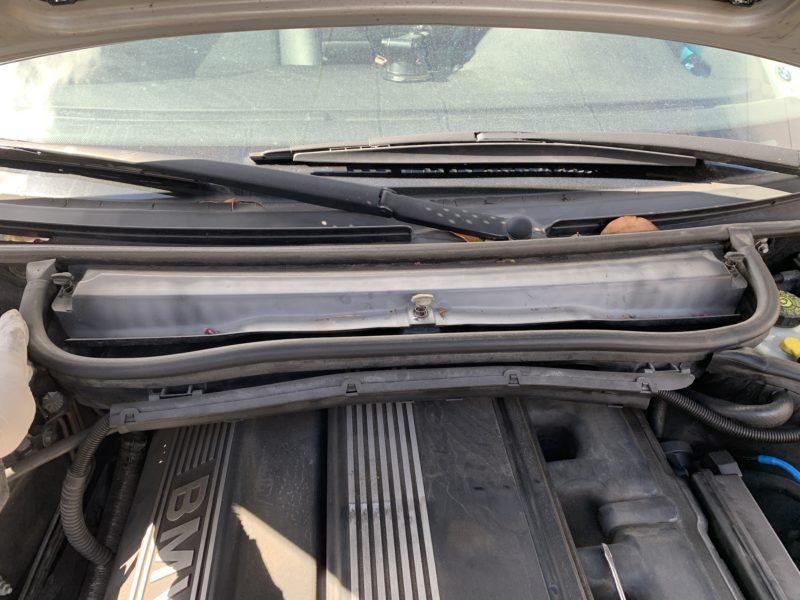
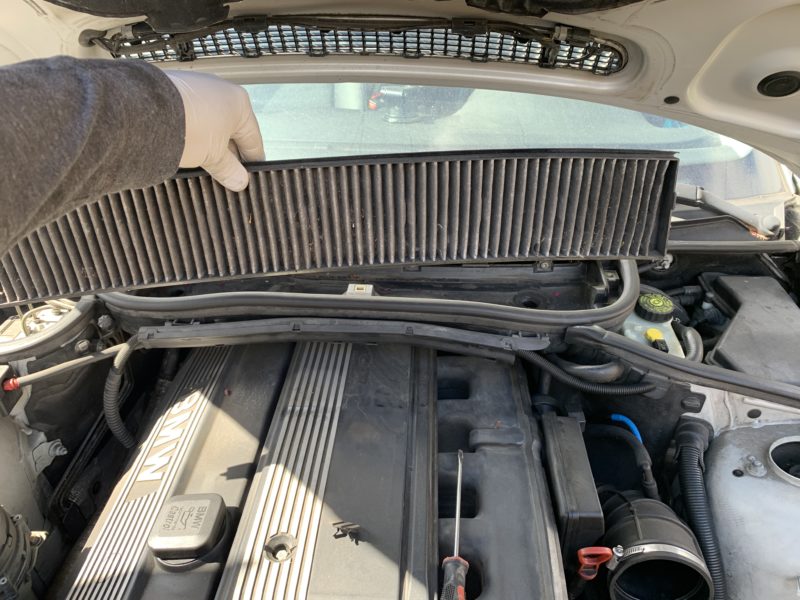
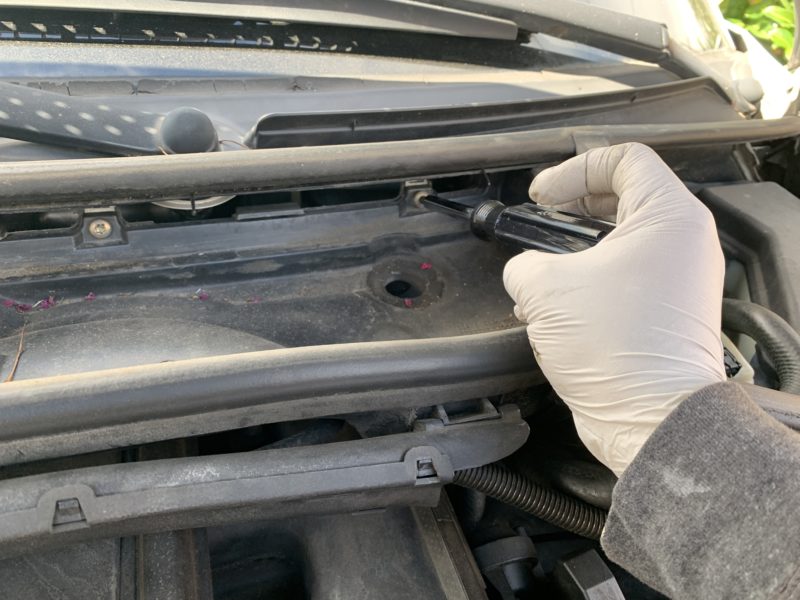
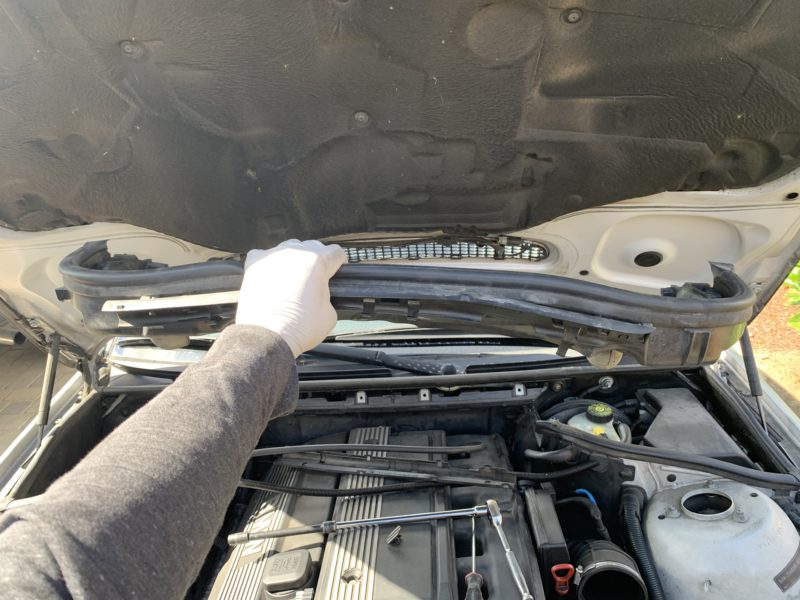
Next, remove the (4 qty) engine cover clips on both engine covers and then remove the (4 qty) 10mm bolts underneath. You’ll have to unscrew the oil filler cap in order to remove the passenger side engine cover. Set the engine covers, bolts, and cover clips aside.
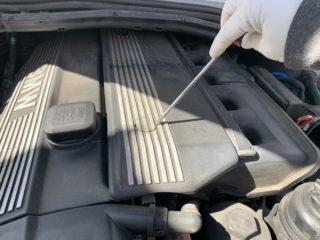
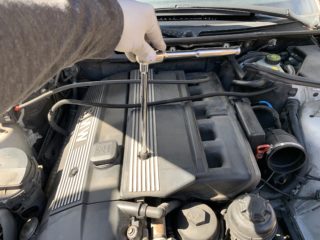
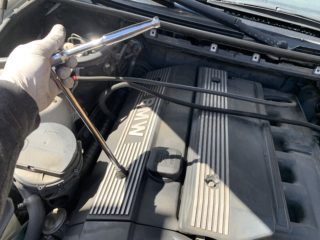
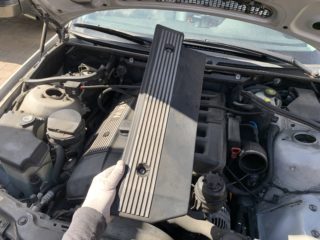
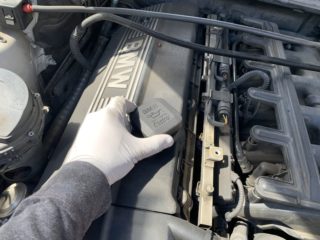
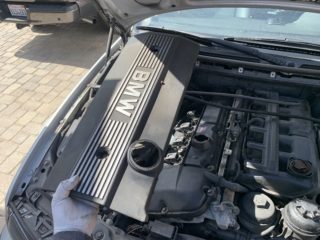
You should replace the oil filler cap so that nothing falls in during this spark plug replacement job.
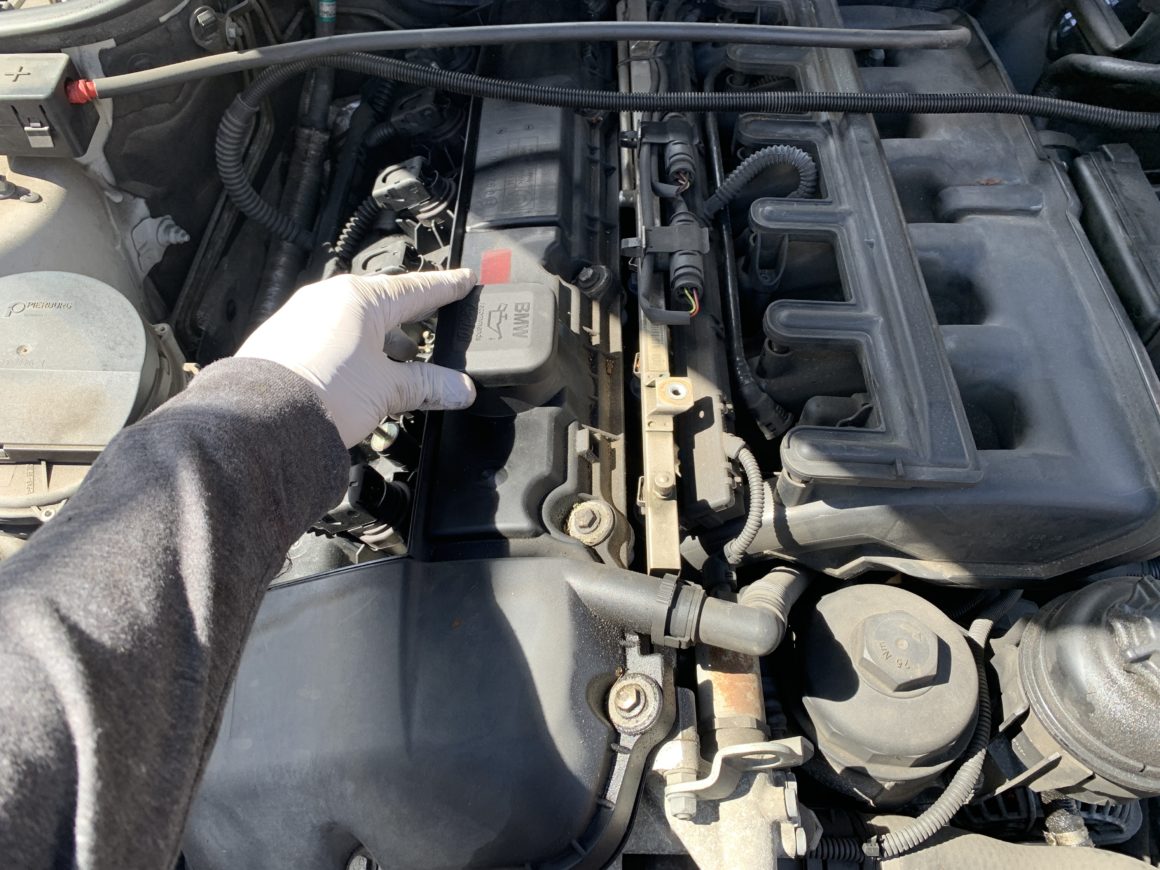
With the BMW E46, I’ve seen two different styles of ignition coils. One style, is the one on this E46 shown below. The ignition coil has an integrated plastic locking cover that secures the connector to the ignition coil. When you pull up on this locking cover, it unlocks the connector and allows you to remove it from the ignition coil.
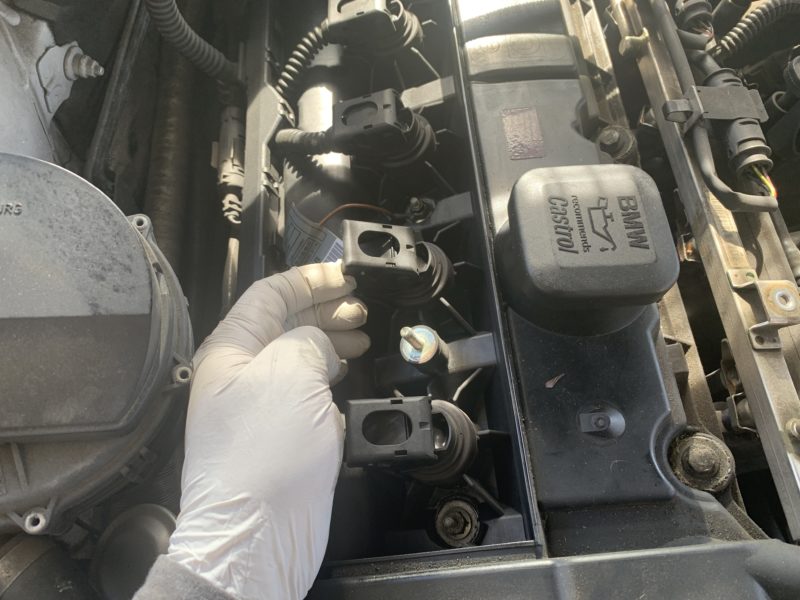
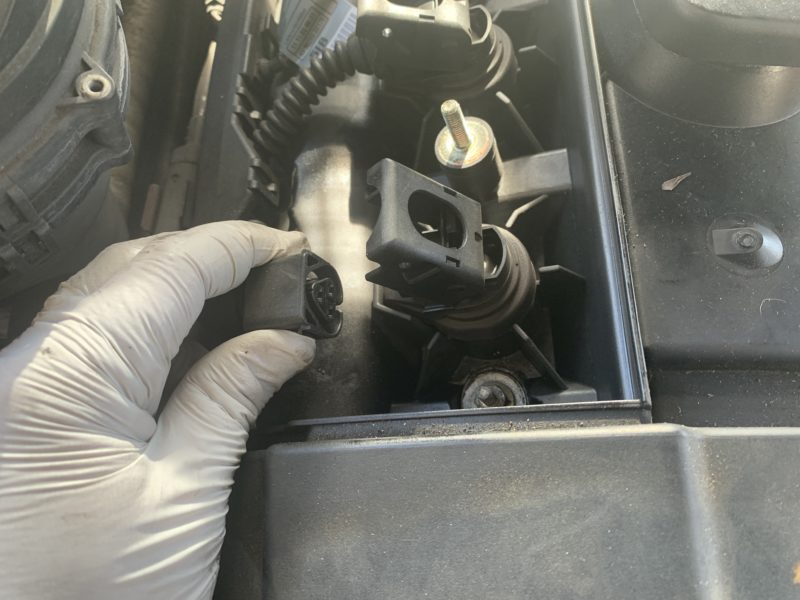
If your ignition coil is stuck on and you can’t pull it off by hand, you can use a large flat head screwdriver, run it through the clip opening, and leverage the screwdriver to pop the ignition coil off.
I like to do all of my spark plugs all at once. Although it’s not necessary to reinstall the ignition coils back to the cylinder chamber they initially came from, I prefer to do it this way, hence the labeling of the ignition coils.
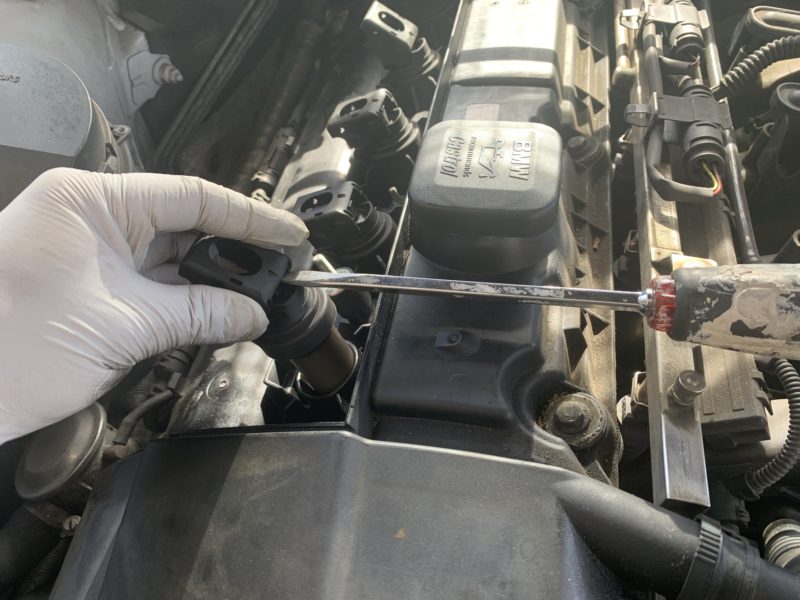
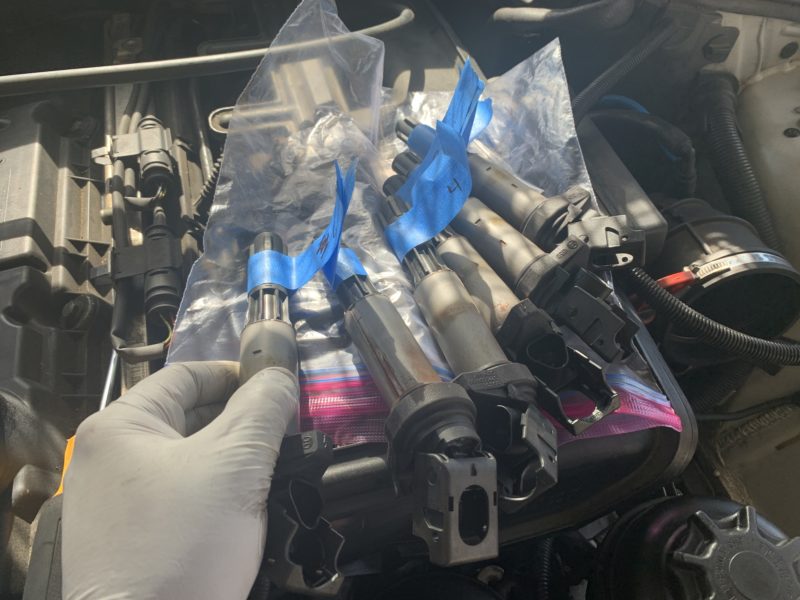
The other ignition coil style that I’ve seen is the type where the connectors are connected to the ignition coil via these metal clips. The image below shows a mix of different brands of this type of ignition coil. In order to release the connectors from the ignition coil, you’ll need remove the two bolts holding it down, as well as lift the metal spring clip upwards, which will release the connector from the ignition coil.
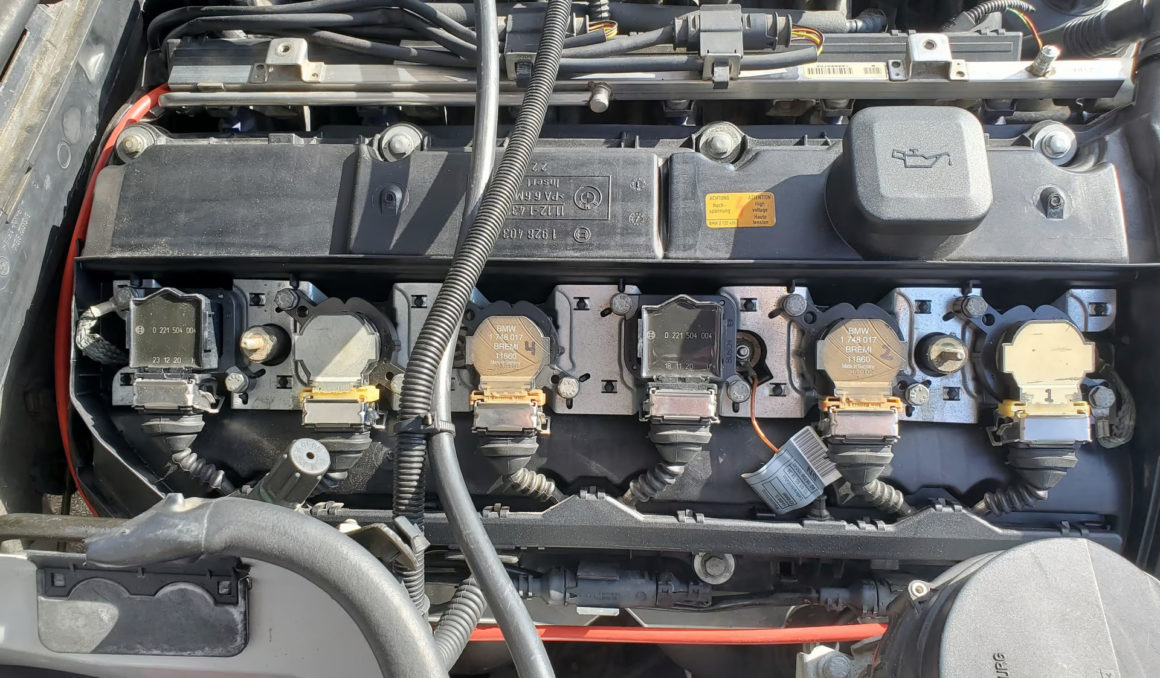
Using a 5/8″ spark plug socket on a long extension and ratchet, remove the spark plug.
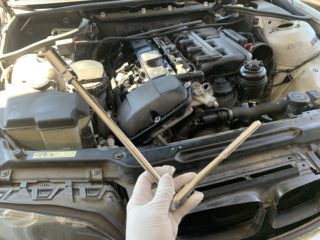
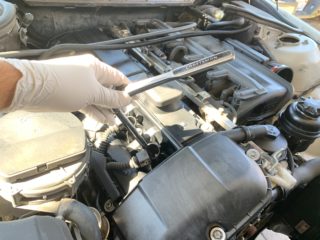
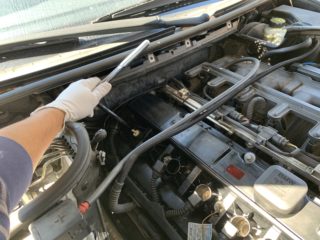
Prep your new spark plugs: check the gap on them if you wish and apply a bit of anti-seize to the threads taking care not to get it onto the electrodes.
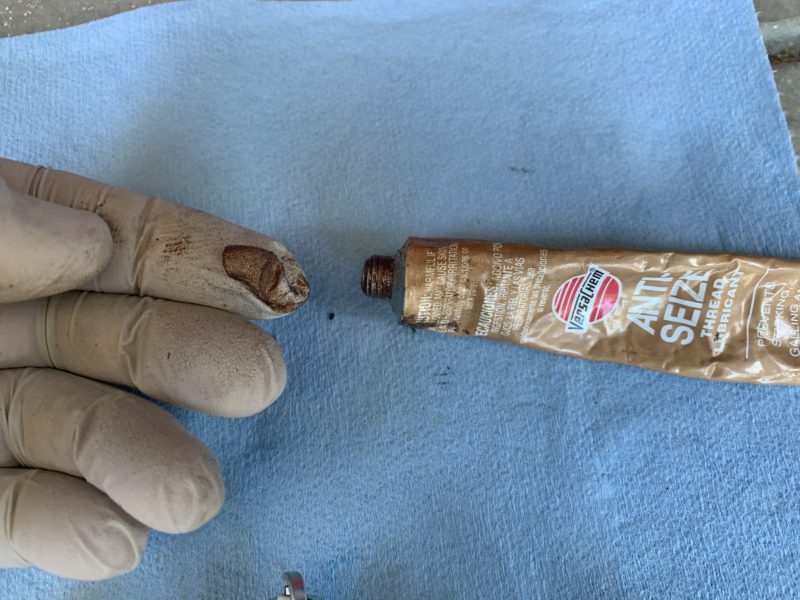
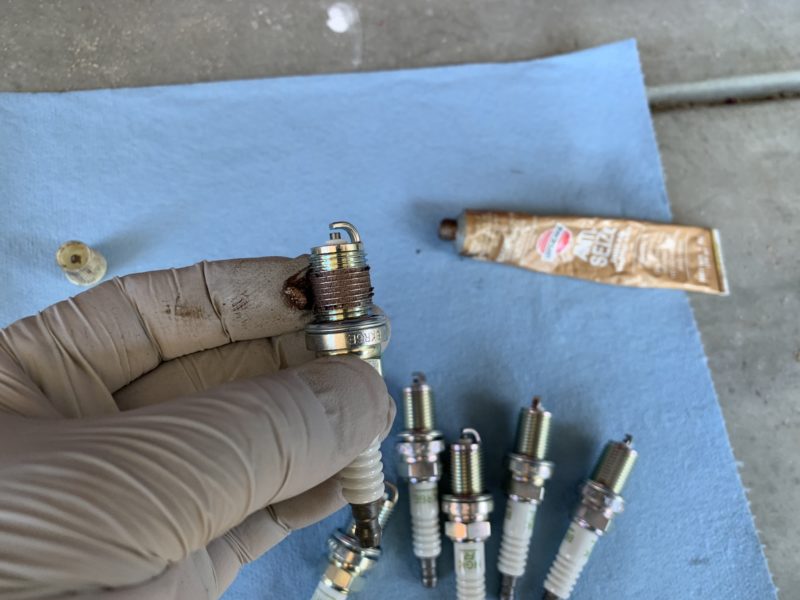
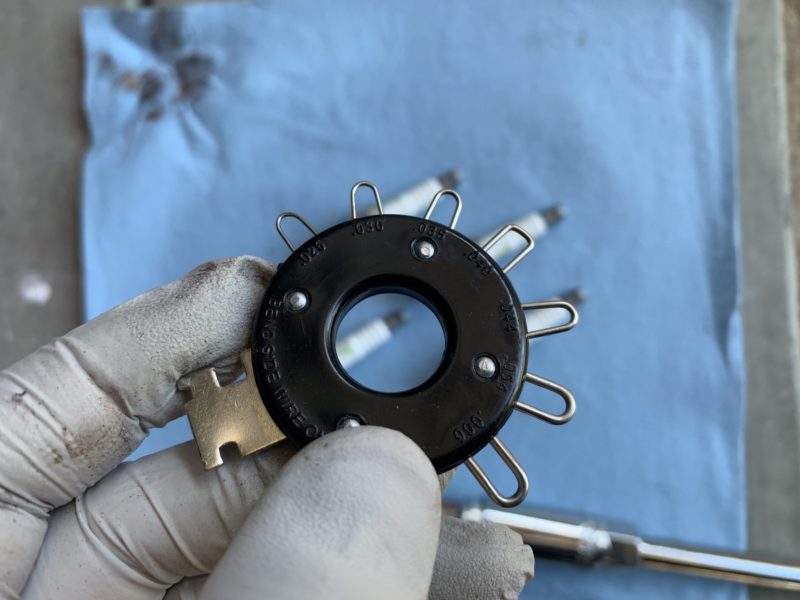
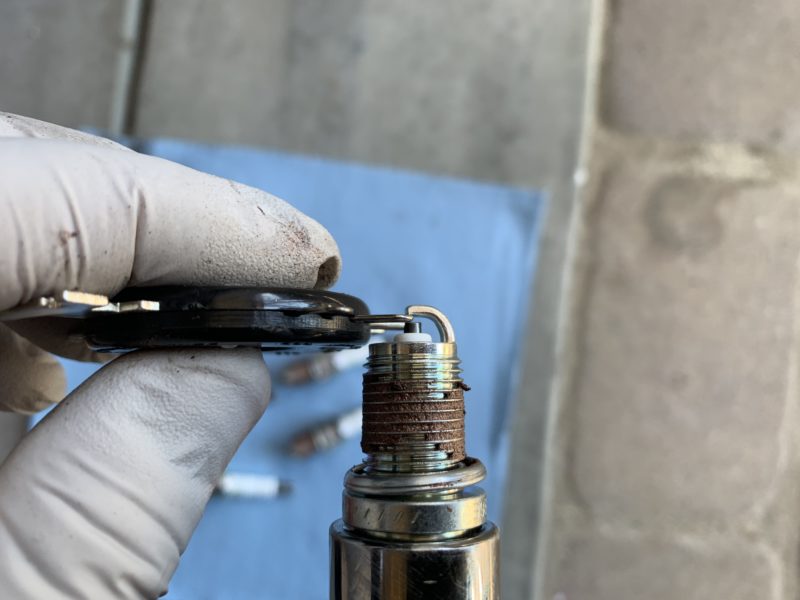
Insert the new spark plug into the spark plug socket. Using just the spark plug socket and extension (no ratchet), carefully insert and thread the spark plug into the cylinder chamber by hand.
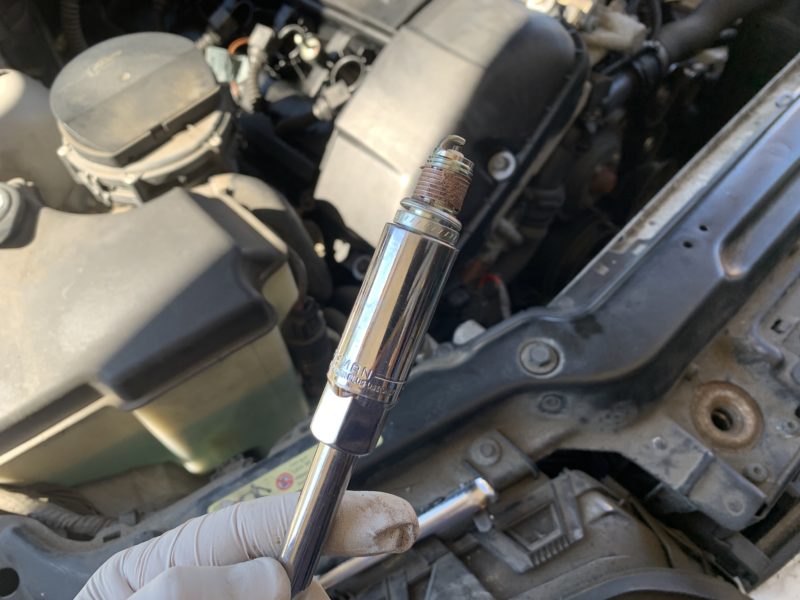
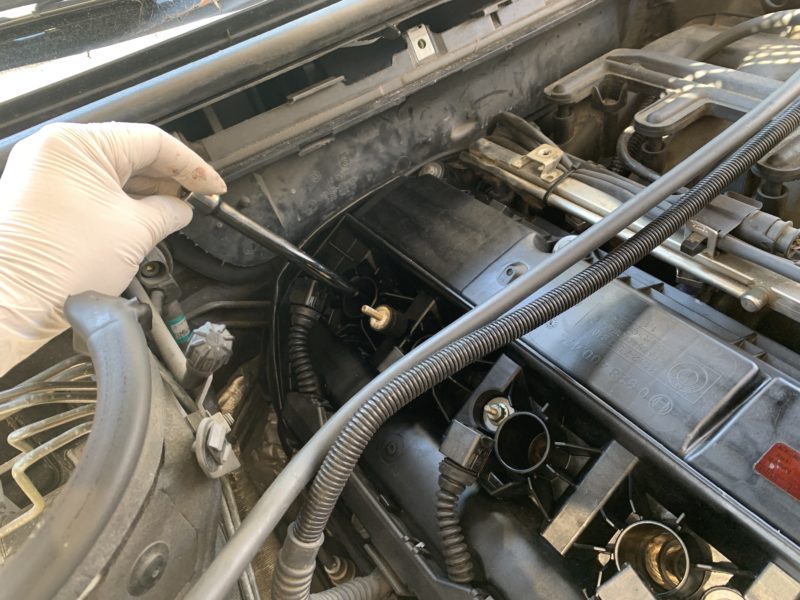
When you can ensure you’ve screwed the spark plug in by hand, screw it down with a ratchet until you feel resistance, then torque it down with a torque wrench. The tightening torque on the spark plugs for the E46 is 25 Nm (18 ft-lb).
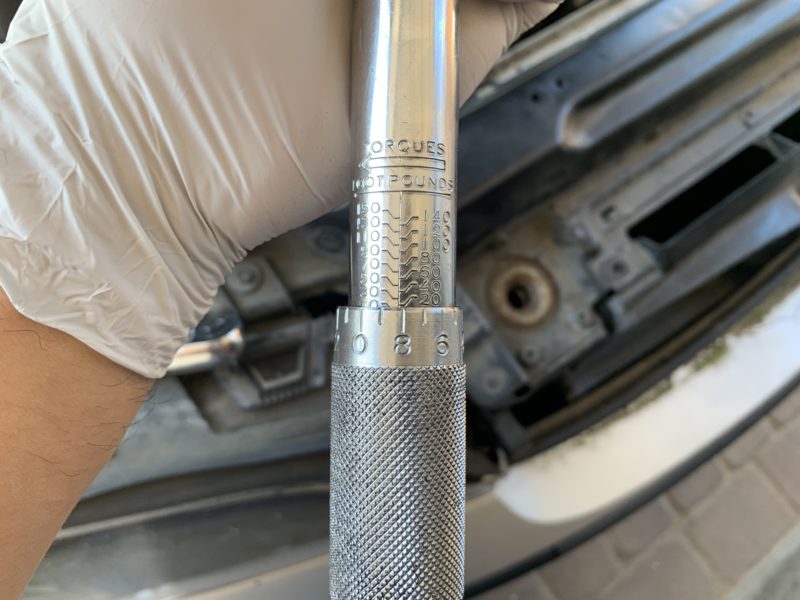
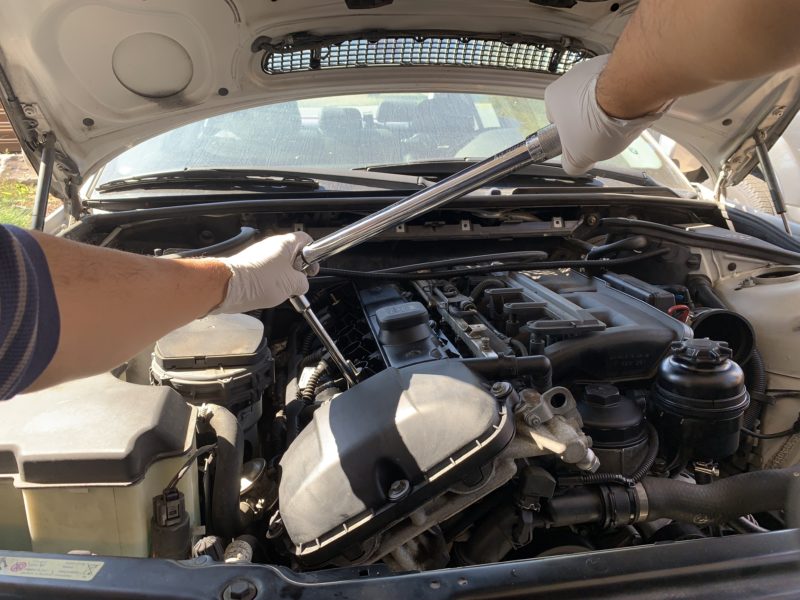
Finally, apply a small dab of dielectric grease to the inner portion of the end of the ignition coil. Then reinstall the ignition coil with the correct orientation. Then, reinstall the connector ensuring that the metal spring clip or plastic locking cover is locking the connector in place and the whole ignition coil is secure.
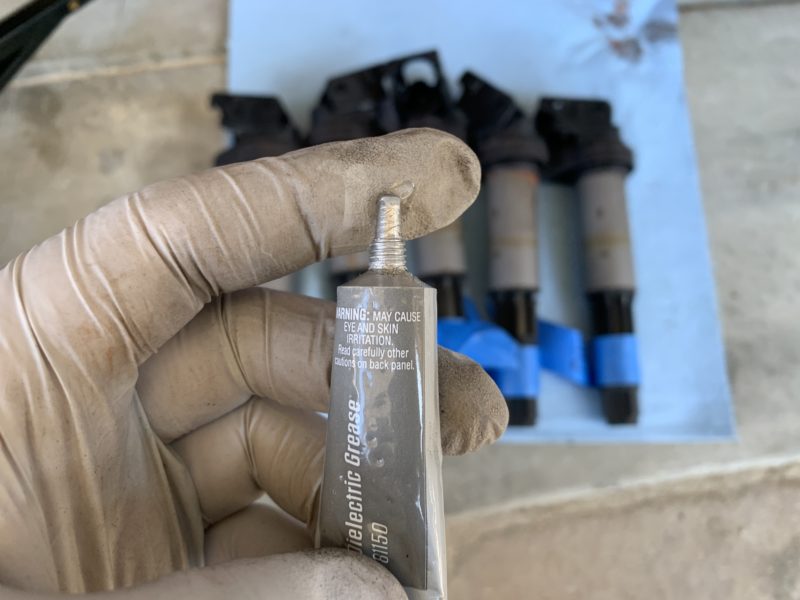
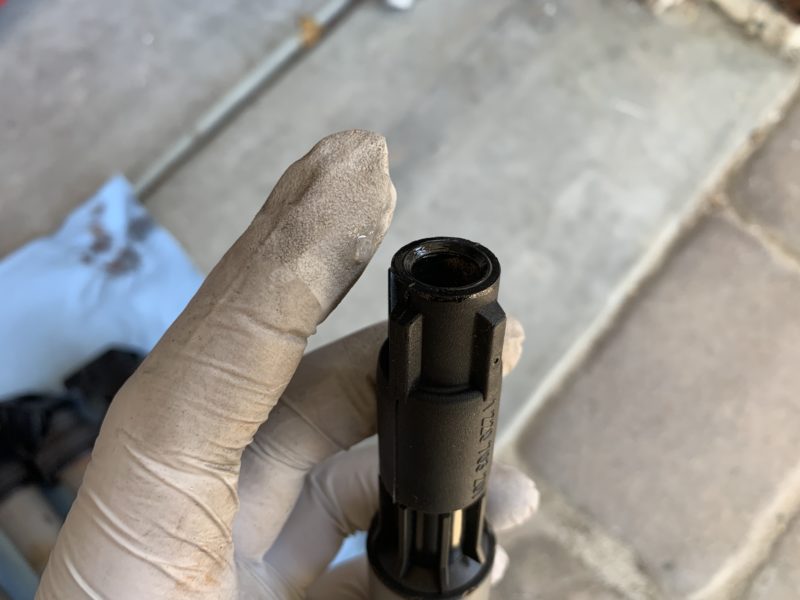
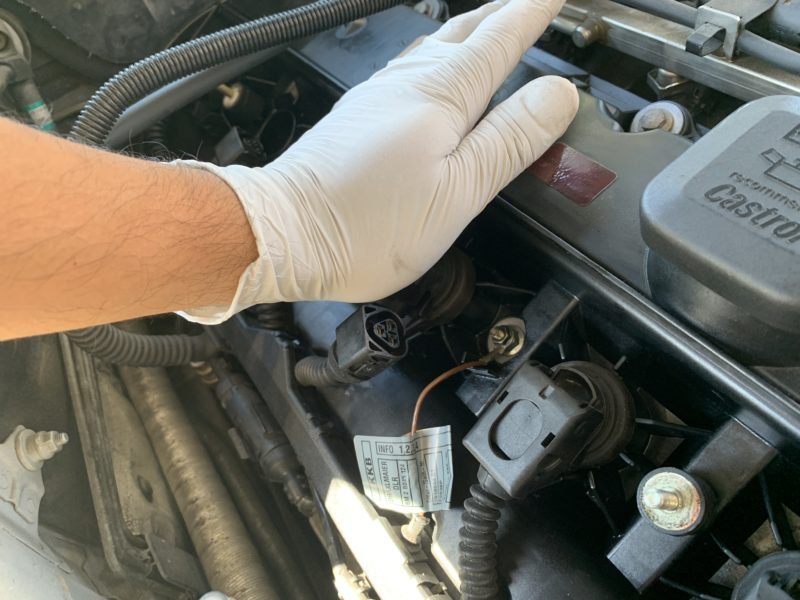
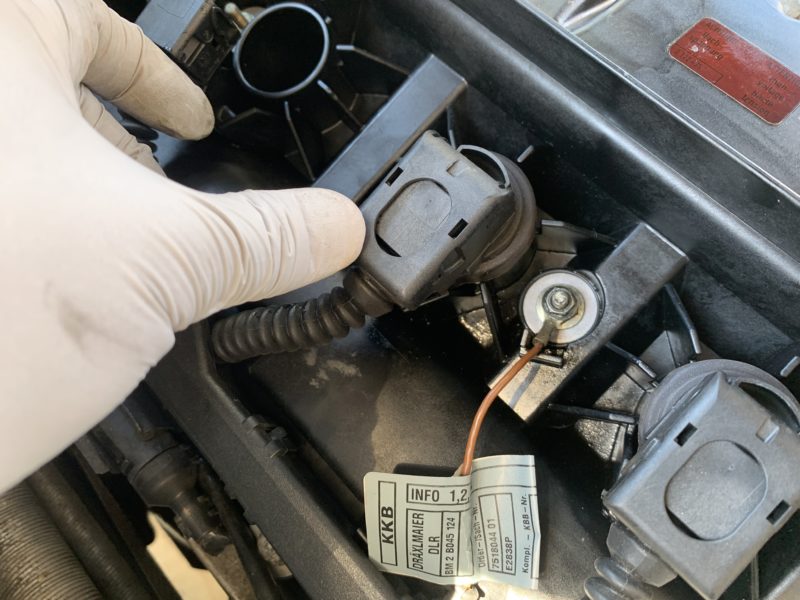
Do the same thing for each of the spark plugs. The rest of the job is reinstalling all of the parts back in reverse order of removal.
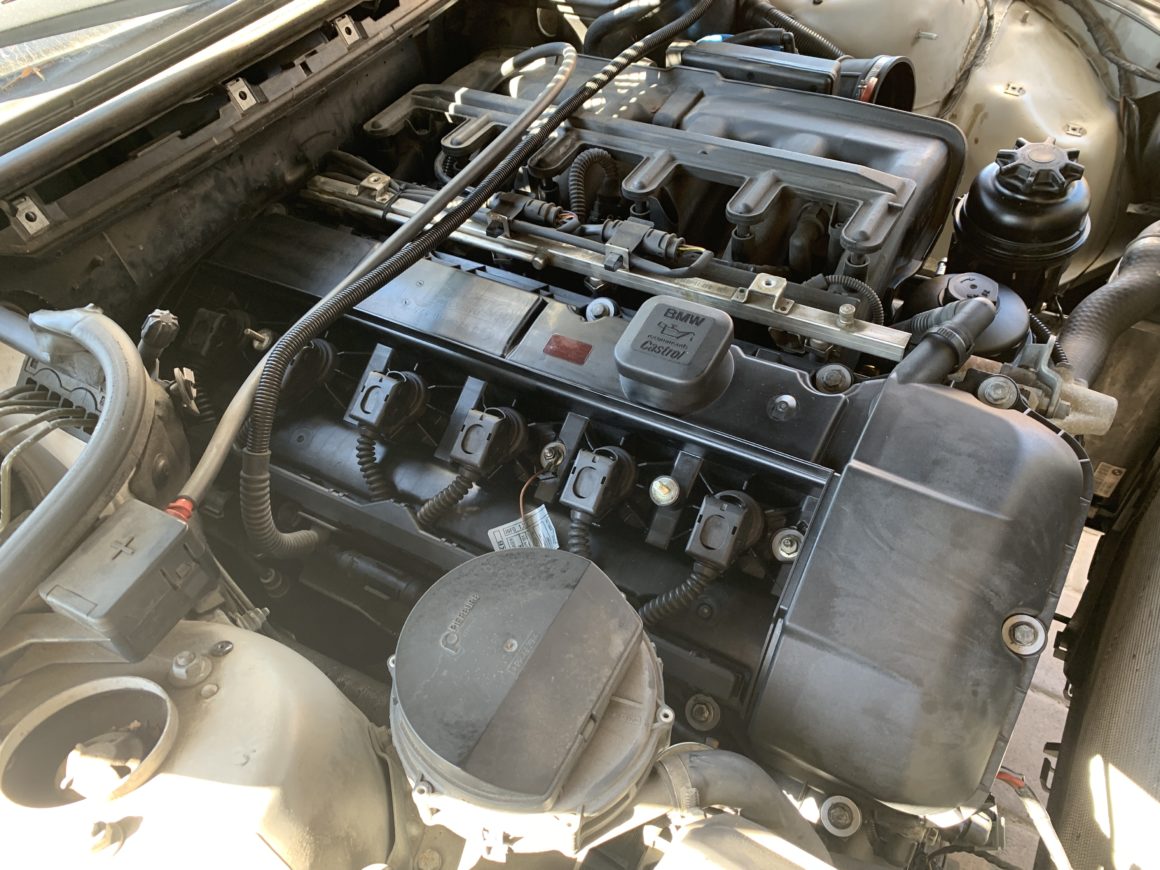
The nice thing about the inline six engine of the BMW E46 series is that all of the spark plugs are lined up on the passenger side of the engine. You can replace all six spark plugs pretty easily with minimal removal of other parts to gain access. I hope you find this write-up useful and that it helps you keep your E46 is good running condition.

